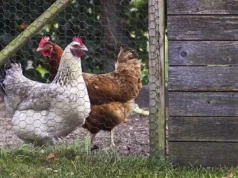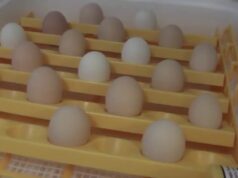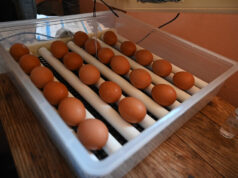Raising baby chicks can be a rewarding experience for both seasoned farmers and new poultry enthusiasts. One crucial aspect of caring for these young birds is ensuring they are comfortable and healthy, particularly when it comes to maintaining the right temperature. Knowing how to tell if chicks are cold is essential for their well-being. In this article, we’ll explore various signs that indicate your chicks might be too cold and discuss effective solutions to keep them warm and happy.

Understanding Chicks’ Temperature Needs
Young chicks, particularly during their first few weeks of life, are highly sensitive to temperature changes. Unlike adult chickens, they cannot regulate their body temperature fully, making them dependent on external sources of warmth.
The Ideal Temperature for Chicks
During the initial weeks, chicks require a consistent and adequately warm environment. Generally, the temperature within their living area, commonly a chick brooder, should start at about 95F (35C) for the first week. This temperature is then reduced by about 5 degrees each week as they grow and begin to feather out.
Using a Brooder
A brooder provides a controlled setting where you can maintain the necessary warmth for your chicks. If you’re new to this, check our guide on setting up a chick brooder to create an optimal environment for your little ones.
Recognizing the Signs of Cold Chicks
Identifying whether your chicks are too cold is crucial for their health. Below are some common signs to watch for:
Huddling Behavior
If you notice chicks clustering together tightly, it’s likely they are trying to share body heat to combat a cold environment. This behavior is one of the most straightforward indicators that your chicks are feeling cold.
Puffed Up Appearance
Chicks often puff up their feathers to trap air and create insulation when they are cold. If this is a persistent behavior across your flock, it could signify a need for a warmer space.
Inactivity and Lethargy
Cold chicks may exhibit signs of low energy. They might appear tired, sleep more often, or display a lack of interest in eating or drinking, which can lead to further health issues.
Effective Solutions for Warming Chicks
If you suspect your chicks are cold, immediate actions should be taken to warm them up:
Adjusting the Heat Source
Ensure your heat source is functioning correctly and positioned appropriately. A heat lamp is a popular choice, but it must be used cautiously to prevent overheating or causing fire hazards. You might consider using a ceramic heat emitter or an eco-friendly brooder heat plate for a safer alternative.
Providing a Cozy Setup
Line the brooder with adequate bedding materials like straw or pine shavings. These not only offer comfort but also help with insulation against cold floors.
For more setup tips, visit our article on chick brooder basics.
Ensuring Adequate Brooder Size
A brooder that’s too small can cause overheating in spots, while one too large may disperse heat unevenly. Ensuring the right size for your chick count is important to balance warmth and space effectively.
Understanding Behavioral Changes
Changes in behavior can often signal your chicks’ comfort levels.
Vocalizations
Cold chicks might chirp louder and more frequently out of distress. Learning to distinguish between normal and distressed chirping will help you identify temperature-related discomfort.
Growth and Feather Development
Chicks that spend too much energy staying warm might show slower growth and delayed feathering, as energy is diverted from growth to maintaining body heat.
Using Technology to Monitor Temperature
Advancements in technology make it easier to maintain the perfect conditions for your flock.
Thermometers and Thermostats
Installing a thermometer allows you to monitor the brooder’s temperature actively. Some advanced setups include thermostats that can automatically adjust heat sources to maintain a consistent environment.
Smart Brooder Systems
There are now smart brooder systems available that include features like remote temperature monitoring and control via smartphone apps, which can be particularly useful for busy keepers.
Preventing Future Cold Issues
Preventative measures can ensure your chicks remain healthy and comfortable.
Continuous Monitoring
Regularly check the condition of your heat sources and ensure no equipment malfunctions. Make adjustments as needed, especially during seasonal changes.
Adapting to Age Changes
As chicks grow, their temperature needs will change. Gradually adjust their environment and maintain their comfort by following proper guidelines.
For more information, read our advice on when to move chicks to brooder.

FAQs About Cold Chicks
Why are my chicks huddling together?
Huddling is a sign of cold chicks. They group together to share body heat, indicating their environment is too cold for comfort.
How can I warm up my chicks quickly?
Check your heat source and adjust its proximity or output. Add extra bedding to their brooder for insulation.
What if my chicks continue being inactive?
Prolonged inactivity might need further assessment of their environment. Ensure they have proper heat and access to food and water. If issues persist, consulting a vet is advisable.
Keeping chicks warm and healthy requires attention to their behavior and environmental setups. By understanding how to tell if chicks are cold and taking preventive action, you ensure they grow lively and strong. For additional resources on chick rearing, visit Why You Need A Brooder For Your Homestead and explore comprehensive guides.
This article contains affiliate links. We may earn a commission at no extra cost to you.











